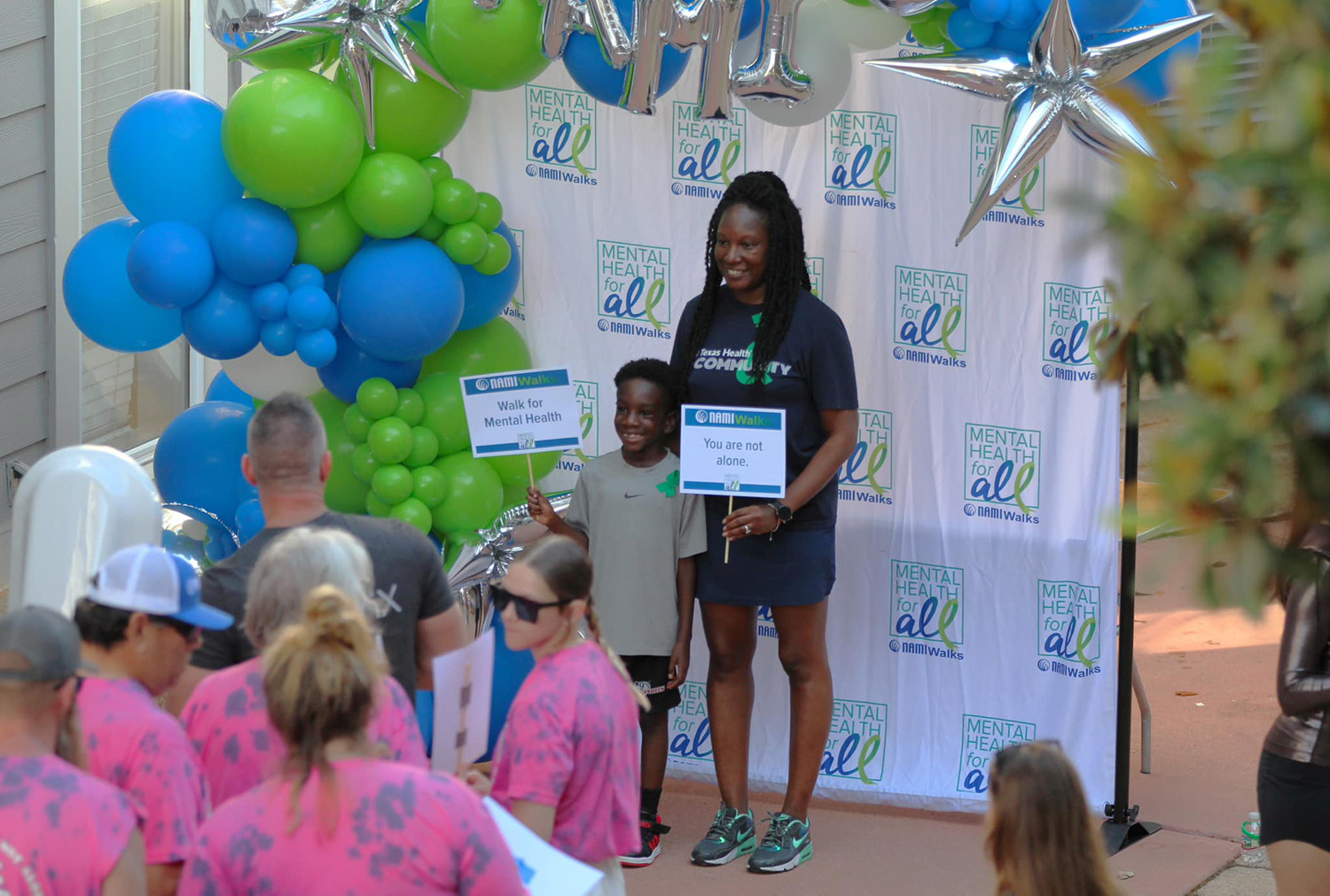Interview and video by Angelica Villa. Photos provided by Nami North Texas.
Carolyn: We refer to this as the Blue House. It is an actual house, but we use it as our office. Typically, our programs for classes, support groups, and community presentations are all over our service area, which is Dallas, Rockwall, Denton, and Collin Counties. Those kinds of programs we do with volunteers. Sometimes, staff facilitates them, but we just try to be involved with the community as much as possible, whether from our desks or a table in the community.

Carolyn: I have worked with NAMI North Texas for over two years, but I have been familiar with NAMI for a bit longer than that because I am a peer and a family member myself. I have a mental illness, and I have a lot of friends and family members who struggle with mental illness as well, so I have personally used a lot of NAMI’s resources and information to cope with everything that I’m going through and to know how to help people around me. When I had the opportunity to work for NAMI North Texas and help others the way I was helped, I wanted to jump on that.
Analy: My reason for working here at Nami, and just in general with youth, is because I have a sister who was diagnosed with schizophrenia in her 30s. We saw a lot of issues start springing up when she was in middle school. I want to be that person that I wish we could have had it for her at that time, that could guide us and give us some information about mental health. And for it not to be so stigmatized, especially in our culture. That’s why I am passionate about youth; I want to be able to help them at that vulnerable age so that they don’t have to struggle by themselves. I want them to know that there is hope and that they have access to resources.

Analy: We offer two programs for youth. The first is NAMI On Campus, which is a club that we offer in schools for school-aged kids up to college. The new program we’re offering now is Nami Blooms, which is aimed at helping girls involved with the juvenile justice system. So those are the two main programs for the youth here.
Carolyn: NAMI has helped a family that attends many of our support groups. They facilitate a lot of our support groups now. It’s a parent couple and their adult son who deals with bipolar disorder. Through our programs, support groups, and classes, they were able to understand what the mental illness actually is, what the symptoms are, and then what to do when there’s a crisis. We’ve seen them go from a family in crisis 15 years ago– don’t know where to go, don’t know what to do– to now being facilitators. They’re helping other family members, and they’re helping other peers understand what to do if you have to call 911, how to talk to the hospital if your loved one is there, etc. It’s really amazing.
Carolyn: My vision for NAMI in the future is exactly what our mission is: a world where mental health services are accessible to everyone. We want everyone to be able to understand what mental health is and get the support that they need, whether that’s through a more clinical treatment program or just having people around them who care, whether it’s through us or through connecting people to other services. We have many volunteer opportunities. We’re doing things anywhere and everywhere that we can. So we need people to do the presentations, to table at different health fairs and back-to-school fairs, and always need facilitators for our support groups and to teach our classes.
Sign up with your email address to receive good stories, events, and volunteer opportunities in your inbox.